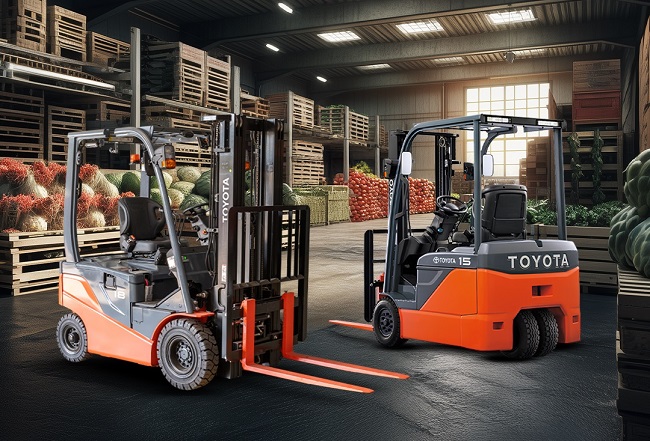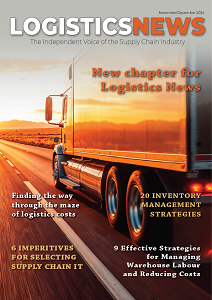As industries transition toward more sustainable and efficient operations, electric forklifts with zero emissions, faster charging times and enhanced energy efficiency powered by lithium-ion batteries are leading the change.
In addition to their environmental and operational benefits, many electric models are equipped with advanced safety and usability features, further streamlining workflows and boosting productivity.
Jenna Botterill, Corporate Sales Executive of Toyota Material Handling, a division of CFAO Equipment, says beyond the obvious environmental advantages of owning or renting electric forklifts, there are operational and financial benefits too. “Operations no longer need to store diesel fuel on-site, reducing the risk of contamination and creating a safer work environment. The shift to electric also eliminates the potential for fuel theft, a significant concern in the South African market.”
Investment in electric forklifts aligns with many businesses' Environmental, Sustainability and Governance (ESG) strategies. “This is an added incentive as operations that reduce their carbon emissions and achieve their sustainability goals are afforded tax rebates by government,” notes Botterill. Regarding performance, electric forklifts are on par with their diesel counterparts in key areas such as travel speed, lifting and lowering capabilities, ground clearance and overall efficiency. “Not only do they deliver power in motion, but they can also operate on the same types of terrain as diesel forklifts.”
One of the most common customer concerns is whether electric forklifts can perform in wet weather. “Today’s electric forklifts are highly advanced, featuring roof covers and sealed compartments that protect electrical components. To add to this, our forklifts are IPX4-rated, meaning they are resistant to splashing water from any direction, ensuring that they operate in all weather conditions,” adds Botterill.
From a costing perspective, investing in electric forklifts makes sense. “When calculating the ROI, we take the forklift’s total running costs into consideration. This is made up of the rental portion, maintenance portion and the fuel consumption component. On average, a medium utilisation application will require roughly R6,500 worth of diesel per month to run a single machine. When calculated over a rental period of 60 months, it amounts to about R390,000 annually. A fleet of 10 units could equate to R3.9 million worth of diesel needed to “feed” the fleet over a 60-month period,” explains Botterill.
The average running cost for electric units, on the other hand, amounts to about a tenth of the cost of running diesel units. Botterill says that their team works with their customers to establish the ROI based on their specific utilisation, site application and shift patterns, amongst other considerations. “We walk the path hand in hand with our customers to ensure the change in equipment specification makes both financial and functional sense.”
Notably, no special setup is required to accommodate electric forklifts. With the old specification lead-acid batteries, operations need a battery bay, an extraction system and a gantry to remove and insert batteries, which means additional space and investment are needed. When lead-acid equipment is run over double shifts, two lead-acid batteries are required, one in the machine while in operation and one on charge, with each battery taking eight hours to charge and a further four hours to cool down. This is an expensive and time-consuming exercise.
“By comparison, lithium-ion batteries only require 50 minutes of charging per day. We also encourage our customers to ‘opportunity charge’ their batteries – shorter charges during teatime, lunch breaks and shift change to reduce work interruptions,” notes Botterill.
Today, electric forklifts boast numerous features that enhance their safety and operability such as an anti-rollback feature to facilitate incline work. When the accelerator or brake pedal is released while stopped on an incline, the forklift stops and then descends at a constant speed, ensuring smooth operation on slopes. Some models have a rear pillar grip assist handle with hooter. About 90% of accidents occur when forklifts travel in reverse as drivers often twist and turn in their seats to see reverse travel direction.
Recognising that about 50% of work is conducted in reverse, Toyota Material Handling developed the rear grip assist function with a built-in horn. This improves comfort and safety during reverse travel and allows drivers to easily activate the horn while backing up. By using this function, drivers can pre-warn any pedestrians or oncoming vehicles with ease.
The benefits of owning electric forklifts are underlined by their speed, agility and efficiency. “They are environmentally cleaner, easier to handle, longer lasting, quieter, cheaper to maintain and more efficient. This means they move more pallets per hour, helping to boost efficiencies in every industry,” concludes Botterill.

.png)


